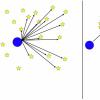Beautiful post.
Turnbuckle you wrote:
the endogenous proliferation of stem cells should provide the most direct and comprehensive approach to restoring cellular maintenance and extending lifespan.
You introduced to us some good concepts earlier. I presume you mean here, "endogenous proliferation of SCs that is cognizant of symmetric replication (i.e. self-renewal aspect)? so as to prevent their ultimate depletion .. as that would occur if self-renewal is not factored in.
You wrote:
With time, cells undergo epigenetic mutations (epimutations) that degrade cellular performance. These occur far more frequently than with the underlying genetic code, and there is no repair mechanism except replacement. Thus replacing old epimutated cells with new cells derived from SCs having de novo methylation will improve the performance of organs and the body as a whole.
You view epimutations as detrimental. I find this concept difficult, as when I as impartial observer view epiMutations, I see a savior. These epiMutations could be an evolutionary advantage to keep us alive (instead of us succumbing rapidly to our fundamental genetic defects). Case in point: John has a major ERCC5 defect, i.e. he has a limited DNA repair capacity. With an altered lifestyle John has managed to stay very healthy. John has significant epiMutations - but ironically most seem to be associated with longevity (low igf, reduced heme synthesis, reduced protein turnover etc). So with all epiMutations erased, that puts John back at a evolutionary dis-advantage, where his new cells would be subjected to the limited damage repair capacity, but with OxPhos this time running at full capacity, the future mutations that will quickly accumulate may not be as friendly this time?
You wrote:
replaced by cells derived from proliferated SCs of part A
I did not catch, what is Part A and Part B.
You wrote:
Telomerase promoters like resveratrol should definitely be avoided
I appreciate the guidance to follow the protocol strictly. But for broader knowledge, what is the rationale of not using a Telomerase promoter here?
Would it be ok to use it with your other Mitochondrial protocol i.e. without C60 (a little passionate about Resveratrol here, it was first supplement I ever tried and with great positive effects)
Edited by Learner056, 07 September 2022 - 07:57 PM.

































































